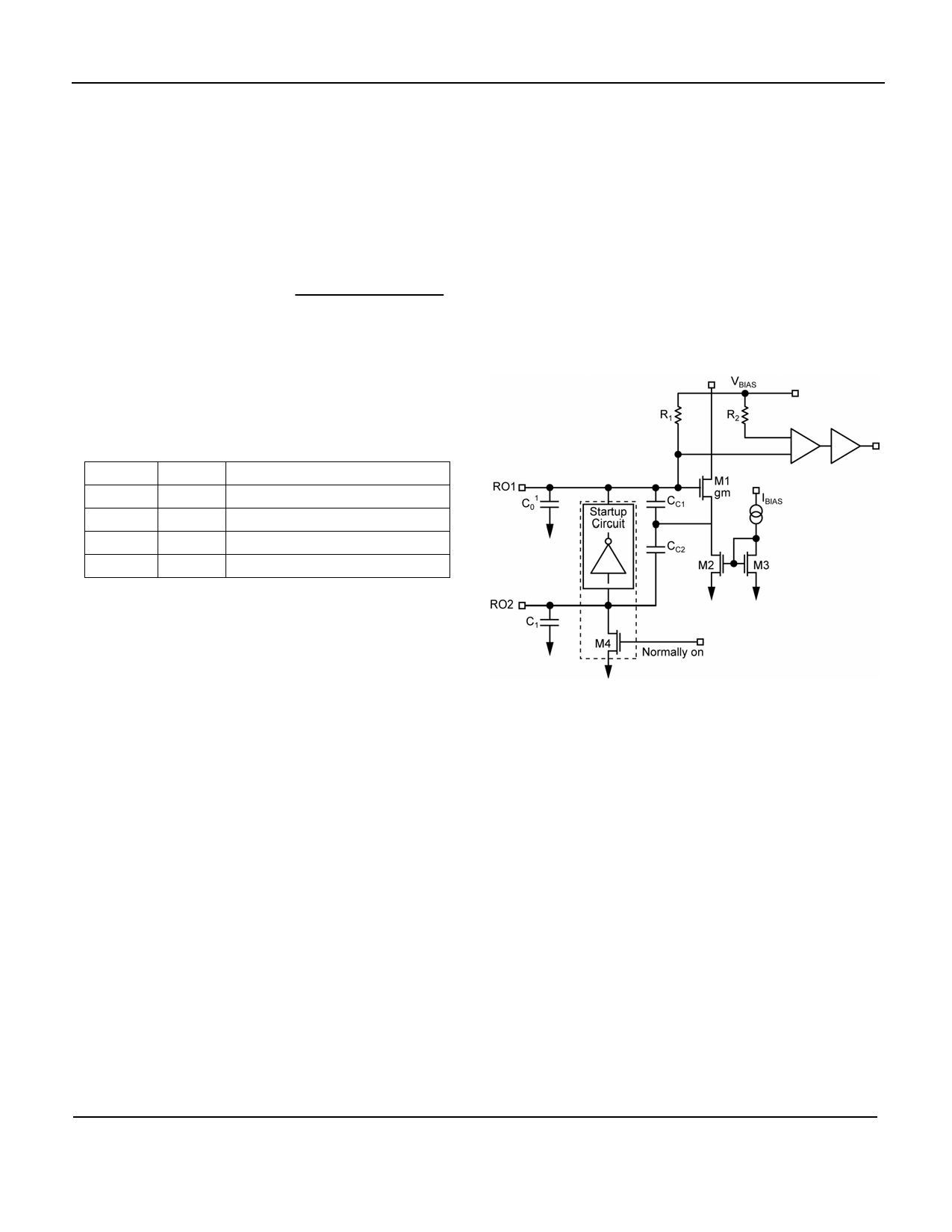MICRF211AYQS View Datasheet(PDF) - Micrel
Part Name
Description
MFG CO.
MICRF211AYQS Datasheet PDF : 17 Pages
| |||

Micrel
MICRF211
carrier from the IF signal. Post detection, the signal
becomes base band information. The programmable
low-pass filter further enhances the base band
information. There are four programmable low-pass
filter BW settings: 1625Hz, 3250Hz, 6500Hz, 13000Hz
for 433.92MHz operation. Low pass filter BW will vary
with RF Operating Frequency. Filter BW values can be
easily calculated by direct scaling. See equation below
for filter BW calculation:
BWOperating Freq = BW@433.92MHz*
⎜⎛ Operating Freq (MHz) ⎟⎞
⎝
433.92
⎠
It is very important to choose the filter setting that best
fits the intended data rate to minimize data distortion.
Demod BW is set at 13000Hz @ 433.92MHz as default
(assuming both SEL0 and SEL1 pins are floating). The
low pass filter can be hardware set by external pins
SEL0 and SEL1.
When the output signal is less than 750mV thresh-hold,
1.5µA current is sourced into the external CAGC
capacitor. When the output signal is greater than
750mV, a 15µA current sink discharges the CAGC
capacitor. The voltage developed on the CAGC
capacitor acts to adjust the gain of the mixer and the IF
amplifier to compensate for RF input signal level
variation.
Reference Control
There are 2 components in Reference and Control sub-
block: 1) Reference Oscillator and 2) Control Logic
through parallel Inputs: SEL0, SEL1, SHDN
Reference Oscillator
SEL0
0
1
0
1
SEL1
0
0
1
1
Demod BW (@ 434MHz)
1625Hz
3250Hz
6500Hz
13000Hz - default
Table 1: Demodulation BW Selection
Slicer, Slicing Level and Squelch
The signal prior to slicer is still linear demodulated AM.
Data slicer converts this signal into digital “1”s and “0”s
by comparing with the threshold voltage built up on the
CTH capacitor. This threshold is determined by
detecting the positive and negative peaks of the data
signal and storing the mean value. Slicing threshold
default is 50%. After the slicer the signal is now digital
OOK data.
During long periods of “0”s or no data period, threshold
voltage on the CTH capacitor may be very low. Large
random noise spikes during this time may cause
erroneous “1”s at DO pin. Squelch pin when pull down
low will suppress these errors.
AGC Comparator
The AGC comparator monitors the signal amplitude
from the output of the programmable low-pass filter.
Figure 2: Reference Oscillator Circuit
The reference oscillator in the MICRF211 (Figure 2)
uses a basic Colpitts crystal oscillator configuration with
MOS transconductor to provide negative resistance. All
capacitors shown in Figure 2 are integrated inside
MICRF211. R01 and R02 are external pins of
MICRF211. User only needs to connect reference
oscillation crystal.
Reference oscillator crystal frequency can be calculated:
FREF OSC = FRF/(32 + 1.1/12)
For 433.92 MHz, FREF OSC = 13.52127 MHz.
To operate the MICRF211 with minimum offset, crystal
frequencies should be specified with 10pF loading
capacitance.
March 2007
7
M9999-030107
(408) 944-0800